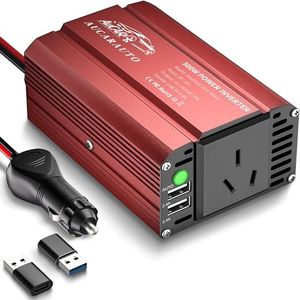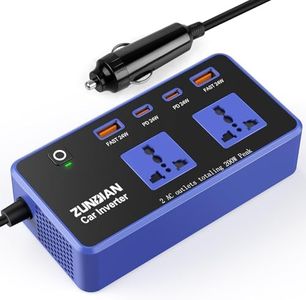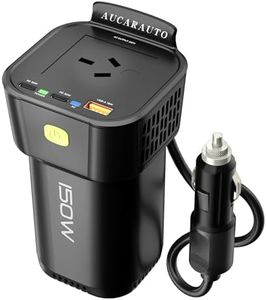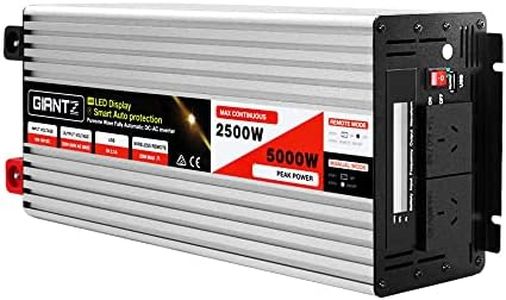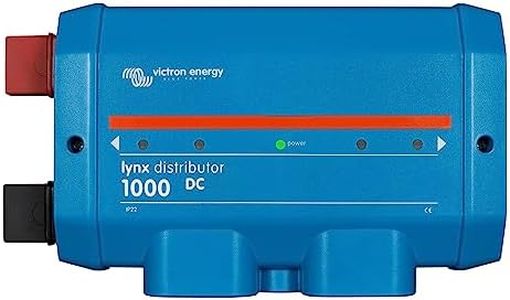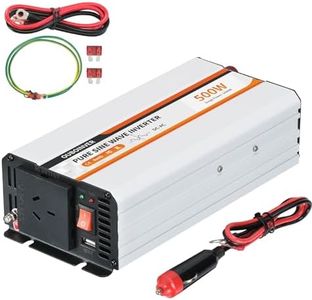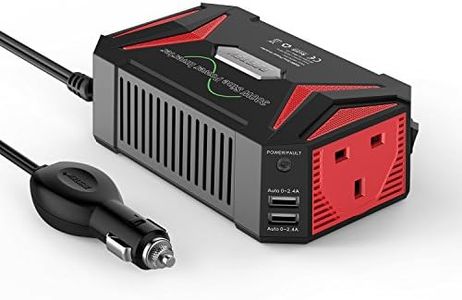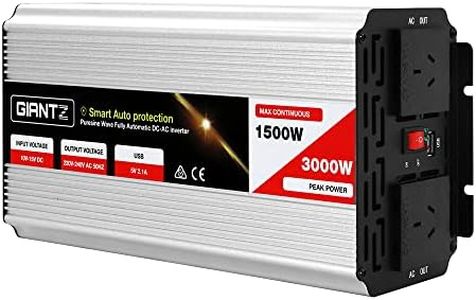We Use CookiesWe use cookies to enhance the security, performance,
functionality and for analytical and promotional activities. By continuing to browse this site you
are agreeing to our privacy policy
10 Best Car Inverters
From leading brands and best sellers available on the web.Buying Guide for the Best Car Inverters
When choosing a car inverter, the goal is to safely and efficiently convert your car’s DC (Direct Current) power from the battery into AC (Alternating Current) so you can use everyday devices on the go. It's important to pick the right inverter for your needs to avoid overloading your vehicle’s electrical system and to power your devices reliably. Start by considering what devices you want to charge or run, and how often you’ll use the inverter. The best fit will be the one that matches your most frequent needs without being too bulky or underpowered.Wattage (Power Output)Wattage indicates how much power the inverter can provide at once. This is important because every electronic device you plug in requires a certain amount of watts to operate—if your inverter can’t provide enough, your devices won’t work or could be damaged. Small inverters (up to 150W) are great for charging phones or laptops, while medium inverters (150W–500W) can handle more demanding electronics like tablets, power tools, or small appliances. Larger inverters (over 500W) are designed for heavy-duty use like kitchen appliances or multiple devices at once. To choose the right wattage, add up the wattage requirements of the devices you plan to use simultaneously and pick an inverter with a bit more power than that total.
Waveform Type (Modified Sine Wave vs Pure Sine Wave)The waveform describes the type of AC power the inverter produces. Modified sine wave inverters are more common and affordable, and can run most standard electronics like chargers, lights, and some small appliances. Pure sine wave inverters provide cleaner, smoother power like you get at home, necessary for sensitive electronics like medical devices, audio/video equipment, or things with electric motors. Choose a pure sine wave inverter if you plan to power sensitive or precise electronics; otherwise, a modified sine wave inverter is usually sufficient.
Input VoltageInput voltage refers to the voltage your car battery provides to the inverter, typically 12V in most cars and 24V in some larger vehicles or trucks. Matching the inverter’s input voltage to your vehicle is crucial—using a mismatch can damage both the inverter and your vehicle's electrical system. Always check your car battery’s voltage and choose a compatible inverter.
Number and Type of OutletsThis specification tells you how many devices you can plug in at once and what kinds of connections are offered (such as standard AC sockets, USB ports, or even specialized outputs). More outlets mean greater flexibility, especially if you plan to charge different devices at the same time. Explore your needs: if you just need to charge a single laptop or phone, a simple inverter with one AC outlet or USB will do; for families or group travelers, multiple outlets may be necessary.
Safety FeaturesA good inverter has built-in protections like overload, over-temperature, short-circuit, and low-battery alarms or shutdowns. These are important to prevent damage to both your electronics and your vehicle, and to ensure safe operation. Look for these features especially if you’re running high-powered devices or plan to leave the inverter unattended.
Cooling Method and SizeInverters generate heat, so they come with either fans or passive cooling methods. Proper cooling prevents overheating, which can reduce efficiency or damage the inverter. Larger inverters or those with active cooling (fans) are better for extended or high-powered use; for light use, a compact or passively cooled inverter is usually enough. Consider your use: frequent or strenuous use calls for better cooling and possibly a larger size.



